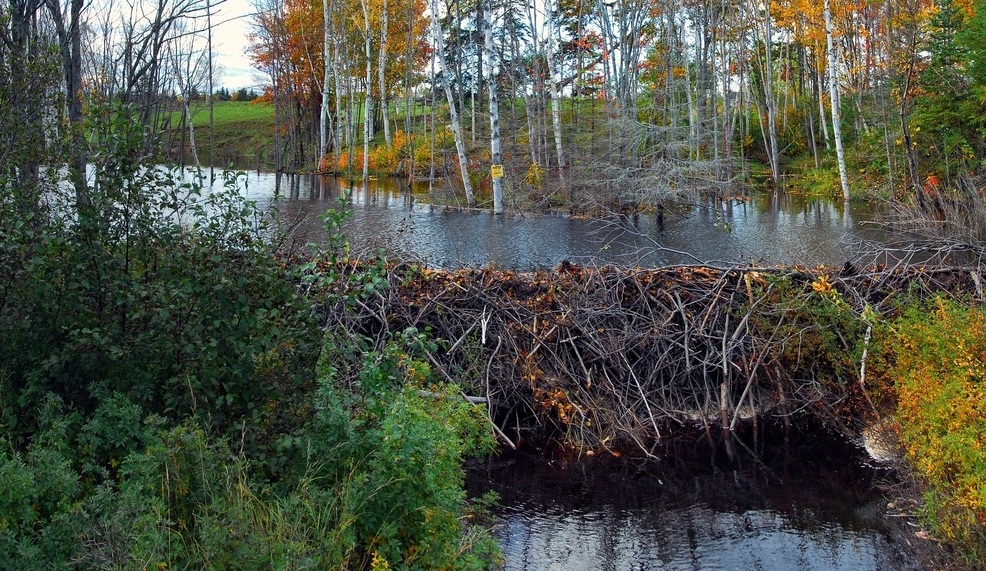|
By Nancy MacFarlane, Climate Corps Fellow Nancy MacFarlane is a Energy and Sustainability Associate at Santa Rosa Junior College. When you think about ways to mitigate climate change, do beavers and beaver dams come to mind? Maybe not, but have you ever seen a beaver in action or their dams? If so, you probably saw a lush surrounding landscape. Why might that be? Well, the water in the stream or creek slowly backs up behind the dams and covers the land, which then creates a wetland teeming with life. We know that in California, as well as other western states, it’s been getting hotter and drier, and we’ve been experiencing more intense wildfires. These beaver dams help slow down the flow of water, allowing it to be stored. This recharges groundwater, thus helping build drought resilience. These expanded wetlands can act as firebreaks and help reduce erosion. In regards to carbon storage and sequestration, the floodplains surrounding beaver dams are referred to as beaver meadows. These meadows contain sediment that store organic carbon. Also, the increased vegetation in these wetlands helps sequester carbon. Dr. Emily Fairfax has been conducting research throughout western states to prove how areas with beaver dams stay green during wildfires and that areas without beaver dams tend to burn. Along with the research from Dr. Fairfax, other studies show that the presence of beavers allows for greater carbon storage and sequestration (1), reduces the risks of flooding and erosion (2), and mitigates the effects of drought (3) and wildfire (4). Other than humans, these furry little engineers are capable of shaping their landscape more than any other mammal (5). So let’s leave it to the beavers to help with mitigating climate change. To learn more about the benefits of beavers on the landscape, please see the sources below and visit: Beavers as Climate Mitigation and Adaptation – Emily Fairfax, Ph.D (emilyfairfaxscience.com) California Beaver Summit | About The Summit (cabeaversummit.com) Sources:
1. Wohl, E. (2013) Landscape-scale carbon storage associated with beaver dams - NASA/ADS (harvard.edu) 2. Brazier, RE, Puttock, A, Graham, HA, Auster, RE, Davies, KH, Brown, CML. Beaver: Nature's ecosystem engineers. Beaver: Nature's ecosystem engineers - PubMed (nih.gov) 3. Fairfax, E, Small, EE. Using remote sensing to assess the impact of beaver damming on riparian evapotranspiration in an arid landscape. Ecohydrology. 2018; 11:e1993. Using remote sensing to assess the impact of beaver damming on riparian evapotranspiration in an arid landscape | Semantic Scholar 4. Fairfax, E. and Whittle, A. (2020), Smokey the Beaver: beaver‐dammed riparian corridors stay green during wildfire throughout the western USA. Smokey the Beaver? Beaver Dams and Wildfire | Landsat Science (nasa.gov) 5. Water: A Natural History by Alice Outwater, 1996, Pg.20 6. Yale Climate Connections, article by Daisy Simmons, November 13, 2018 Beavers can help combat global warming » Yale Climate Connections
0 Comments
Leave a Reply. |
Get In TouchDo you know an environmental leader who should be featured in a story? Reach out to [email protected]. Categories
All
Archives
April 2024
|
Get Involved
|
Contact Us
|
SEI Headquarters
100 Smith Ranch Road, Suite 124 San Rafael, CA 94903 Phone: (415) 507 - 2181 Email: [email protected] States where we work:
Arizona California Colorado Indiana Maryland New Mexico New York New Jersey North Carolina Oregon Washington Virginia |
ConnectSubscribe to the SEI quarterly newsletter to get involved and receive updates
|
SEI is a 501(c)3 nonprofit organization.


 RSS Feed
RSS Feed

